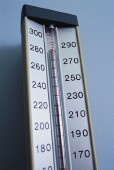
THURSDAY, Feb. 5, 2015 (HealthDay News) — Prompt and intense treatment at the first signs of high blood pressure appears key to preventing heart attacks, strokes and early death, according to a new study.
Patients with systolic blood pressure (the top number in a blood pressure reading) higher than 150 mm Hg faced increased risks if doctors failed to begin aggressive drug treatment in less than a month and a half, researchers report in the Feb. 5 issue of the BMJ.
The risk also increased if doctors didn’t perform a blood pressure follow-up within about three months to see how well the medications were performing for a patient, the study said.
This study appears to be the first to assess how prompt treatment can affect the short-term prognosis of a newly diagnosed high blood pressure patient, said senior author Dr. Alexander Turchin. He is director of informatics research in the division of endocrinology at Brigham and Women’s Hospital in Boston.
“There have been no studies looking at how quickly we need to respond,” Turchin said. “Our findings could help guide clinicians as they think about how their patients should be treated in the clinic.”
People are considered in the first stages of high blood pressure (also called “hypertension”) if they have a systolic pressure reading between 140 to 159 mm Hg. But there’s a lot of disagreement between current guidelines and recommendations regarding the treatment these patients should receive, the study authors noted.
To shed some light on the subject, the study authors examined the medical records of just over 88,000 British patients with high blood pressure to pinpoint the precise blood pressure level and critical time points at which treatment was tied to a decrease in the risk of hypertension-related death.
The investigators first found that a systolic level of 150 mm Hg appears to be the trigger point for serious response by heart doctors. In patients with systolic blood pressures between 130 and 150, the research team did not detect an increase in risk, but above the 150 threshold, the team observed progressively greater risk.
This threshold coincides with recommendations released by an expert panel of cardiologists in 2013 who concluded that adults 60 or older should only take blood pressure medication if their blood pressure level exceeds 150 mm Hg.
But that was just the first step. “There have been many studies that have looked at what the blood pressure threshold should be,” Turchin said. “Where the American guidelines are currently silent is how quickly we need to respond, and they are silent because there is no data in that area.”
The study authors also discovered that delaying the intensification of treatment by more than 1.4 months after a blood pressure rise past 150 mm Hg increased a person’s risk of heart attack, stroke or early death. Doctors can step up treatment by either increasing the medication dosage or by adding in new medications.
In addition, the research team behind the new study found that when patients received a reassessment of blood pressure levels more than 2.7 months after doctors stepped up treatment, their risk of early death also increased.
Dr. Kim Williams is a cardiologist at Rush University Medical Center in Chicago and president-elect of the American College of Cardiology. He said, “The idea is that there really should be that contact within the first five weeks to make sure that therapy has taken hold. If you don’t do that, there are likely to be poorer outcomes.”
Williams said the new study provides fresh evidence upon which doctors can base treatment decisions. “Those are three principles that would be good to operationalize,” he said, referring to the 150 mm Hg threshold, the time frame for stepping up treatment, and the time frame for follow-up.
However, Williams questioned whether the 150 threshold would be good for long-term treatment of high blood pressure.
Blood pressure in the 140 to 149 range is still high, and can contribute to hardening of the arteries and other cardiac risk factors over an extended period. “If you leave a person at 149, their blood vessels are going to get stiffer and stiffer,” Williams said.
He noted that while the study presented a 10-year treatment strategy, the average follow-up time after treatment strategy assessment was only three years in the study patients.
“That’s really sort of short-term in the lives of hypertensive patients, whose treatment we hope will stretch across decades,” Williams said. “I suspect that blood pressure threshold is best for short-term care.”
More information
For more on high blood pressure treatment, visit the U.S. National Institutes of Health.
Copyright © 2025 HealthDay. All rights reserved.

